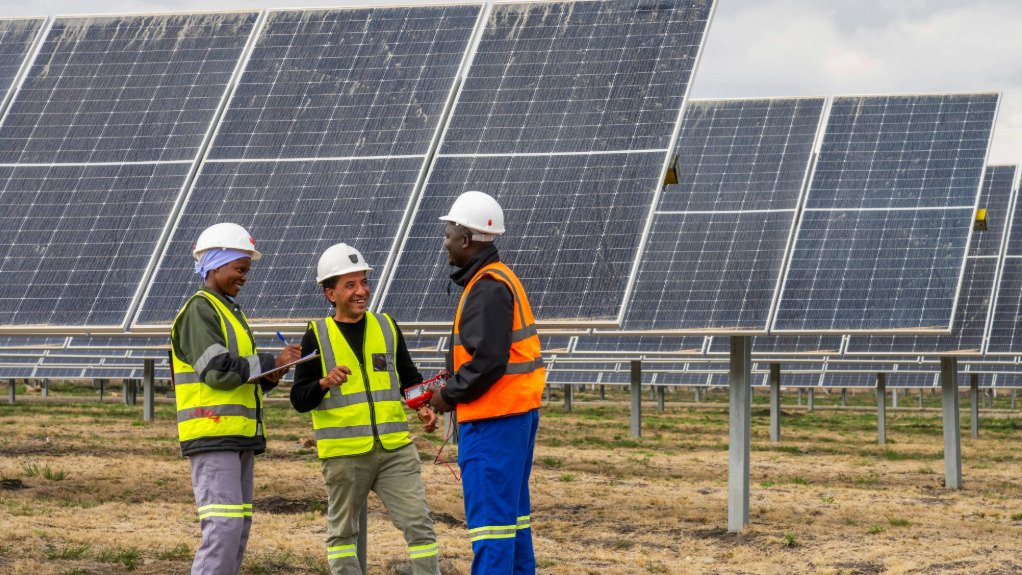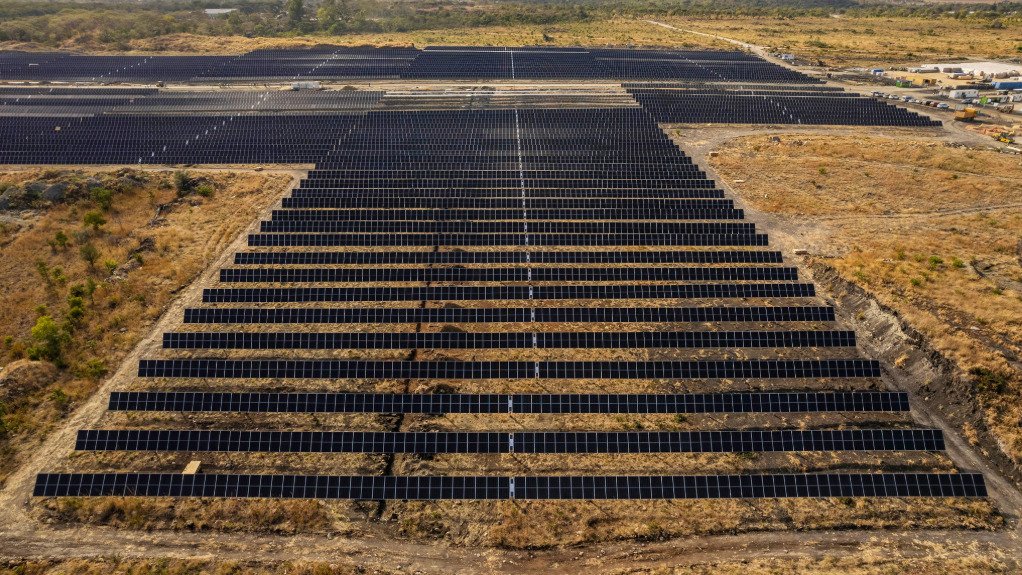With the commissioning of a $360-million smelter expansion project and the first 35 MW phase of its $37-million solar PV power programme having been finalised, platinum mining company Zimplats has entered into a “new era of industrial growth and sustainability”, says Zimplats corporate affairs head Sibusiswe Chindove.
Completed in December 2024, the 38 MW smelter expansion project is designed to process 380 000 t of concentrate yearly, tripling Zimplats’ smelting capacity.
This will strengthen Zimbabwe’s local processing capabilities, advance beneficiation, support third-party producers and reinforce Zimplats’ national industrialisation goals, she says.
The two flagship projects – officially inaugurated in July by Zimbabwe President Dr Emmerson Mnangagwa at Zimplats’ Selous metallurgical complex – form part of the company’s $1.8-billion expansion programme, agreed under a beneficiation roadmap between Zimplats and the Zimbabwe government in 2020.
The smelter expansion demonstrates a “belief in the platinum-group metals (PGM) industry’s future, belief in the power of collaboration and belief in what becomes possible when bold ambition meets sustained action,” says Implats chairperson advocate Thandi Orleyn.
Chindove highlights that the capacity expansion will ensure that other PGM mines along the Great Dyke are able to focus on exploration and mining development since processing capacity, catering for significant national PGM production, has been installed.
Built over 36 months, the smelter plant encompasses 17 000 m3, with 3 500 t of steel, 18 km of pipework and 350 km of cabling used, says Orleyn.
Zimplats is also onboarding third-party PGM producers to use the expanded smelter, which positions Zimbabwe as a regional PGMs processing hub while enabling cross-border collaborations.
“Effective, early onboarding and alignment with local partners on safety, culture and skills transfer are critical. There has been significant skills transfer, to such an extent that operations and maintenance of the plants will be undertaken exclusively by locals,” adds Chindove.
Further, insights gained throughout the implementation of these projects will guide enhanced future onboarding and local capacity building, which, in turn, will reduce reliance on expatriate skills in future cross-border collaborations, she says.
Solar Shift
Zimplats constructed a 35 MW solar plant in August 2024 to support its operations by using clean reliable energy.
The plant supplies Zimplat’s operations with 8% of the total energy consumption required.
“The project brought together Egyptian engineering, procurement and construction expertise, and seven local firms, who collectively employed around 800 workers at peak, most from nearby communities,” outlines Orleyn.
The plant spans 109 ha and features 74 880 solar panels on a single-axis tracking system that follows the sun throughout the day.
Phase 2A of this $54-million solar expansion project is expected to generate 45 MW, and will be complemented by the establishment of a sulphur dioxide (SO2) abatement plant.
Zimplats is also exploring dual land-use options, including agricultural production beneath the solar panels to enhance land use efficiency and reduce environmental impact.
To uplift the nearby community, the company intends to foster an ongoing partnership with the community, which will play a role in cleaning the solar panels to ensure they remain energy efficient and meet nameplate capacity generation.
However, Zimplats also intends to increase its use of renewable energy and is planning to roll out three additional phases of solar PV generation to increase its solar capacity to 185 MW through an investment of $201-million.
“The full 185 MW solar capacity will enable Zimplats to power operations entirely from renewable energy, eliminating fossil fuel use and drastically reducing our carbon footprint,” states Chindove.
Simultaneously, the sulphuric acid produced in the SO2 abatement plant will be used in the production of fertiliser to support Zimbabwe’s agriculture sector.
“The abatement plant will help us meet environmental, sustainability and governance standards, aligned with World Health Organisation guidelines, while producing sulphur for fertiliser manufacturing, supporting our diversification strategy,” concludes Orleyn. ![]()







